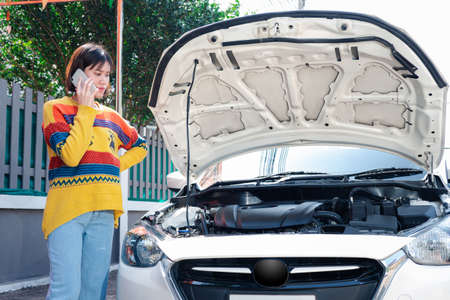Understanding Transmission Repairs
If you grew up tinkering in the garage or just cruising Main Street on a Saturday night, you know there’s something special about keeping your ride running smooth. The transmission—often called the heart of your car’s powertrain—has been turning wheels and winning hearts for generations. It’s what lets your engine’s power get to the pavement, shifting gears so you can glide down the open road or tackle city traffic with ease. But like any good piece of classic American engineering, transmissions need care and attention. Over time, you might notice slipping gears, strange noises, or even that dreaded check engine light coming on. These are telltale signs that your transmission needs a little TLC. Staying ahead of these issues isn’t just smart—it’s a tradition that saves money and keeps your car rolling for years to come. Keeping your transmission in shape is more than routine maintenance; it’s part of preserving a slice of Americana, ensuring that every drive feels as good as the first time you turned the key.
Typical Transmission Repair Costs
When it comes to transmission repairs, costs can swing widely depending on several key factors. Across the U.S., drivers might experience sticker shock if they’re unprepared for what modern-day repairs actually run. Let’s break down what you can expect and why.
Average Costs by Repair Type
| Repair Type | Estimated Cost Range |
|---|---|
| Minor Repairs (fluid change, sensors, seals) | $150 – $500 |
| Transmission Rebuild | $1,200 – $3,500 |
| Full Replacement (new or remanufactured) | $2,800 – $7,000+ |
Factors That Influence Your Final Bill
- Vehicle Make & Model: Domestic brands like Ford or Chevrolet usually cost less to repair than luxury imports like BMW or Mercedes-Benz, where parts and labor are more expensive.
- Type of Transmission: Automatic transmissions typically cost more to service than manuals. CVTs and dual-clutch systems may also add to the price tag due to their complexity.
- Regional Differences: Labor rates vary—drivers in urban centers like New York City or Los Angeles often pay more than those in small towns or rural areas.
- Age & Mileage: Older vehicles or those with high mileage may require more extensive work or even a full replacement rather than a simple repair.
Regional Price Variations Across the U.S.
| Region | Average Labor Rate per Hour | Common Repair Total Cost |
|---|---|---|
| Northeast (e.g., Boston, NYC) | $120 – $180 | $2,500 – $5,500+ |
| Midwest (e.g., Chicago, Detroit) | $90 – $140 | $1,800 – $4,000+ |
| South (e.g., Atlanta, Dallas) | $85 – $130 | $1,700 – $3,900+ |
| West (e.g., LA, Seattle) | $110 – $170 | $2,400 – $5,000+ |
The bottom line? There’s no one-size-fits-all answer. But understanding these typical costs—and what drives them—can help you plan ahead and avoid being blindsided when your trusted ride needs attention.
![]()
3. Hidden Factors That Affect Your Bill
If you’ve ever been surprised by a hefty transmission repair bill, you’re not alone. While the sticker price for parts and labor is front and center, classic wisdom reminds us that it’s often the hidden details that quietly nudge your total skyward. Let’s take a nostalgic ride through some of these less obvious factors—knowledge passed down from seasoned mechanics in small-town shops to city garages across America—that could make all the difference.
Outdated or Limited Warranties
Many car owners assume their factory warranty will cover most repairs, only to discover, when trouble hits, that transmission components are either partially covered or not at all. Extended warranties might offer hope, but they frequently come with fine print that excludes certain repairs, especially for older vehicles. Always dust off those warranty papers and read the terms carefully before heading to the shop—it’s an old-school step that can save you hundreds.
Unique Local Labor Costs
Labor rates vary dramatically by region and even between neighborhoods. In major cities like Los Angeles or New York, hourly rates can be double what you’d pay in a rural Midwest town. Local demand, shop reputation, and technician experience all play into this equation. It pays to call around, ask for estimates, and tap into local knowledge—maybe even ask your neighbor who’s been loyal to the same mechanic for decades.
Parts Availability and Markup
Sometimes it’s not just the part itself, but how quickly—and from where—it arrives. Rush orders or sourcing rare parts for classic American rides can mean premium prices. Shops may also mark up parts more than expected if they order directly from specific suppliers. A bit of homework on part costs and availability can help you negotiate or source your own components.
The “Shop Supplies” Surprise
A line item for “shop supplies” on your bill may seem minor but can add up fast. These charges cover everything from cleaning solvents to rags—small stuff that gets bundled into your final cost. It never hurts to ask for a breakdown so you know exactly what you’re paying for.
Classic Tip: Ask Questions Upfront
The best way to avoid hidden costs is vintage common sense—always ask for an itemized estimate before any work begins. Not only does this keep surprises at bay, but it also sets the stage for an honest relationship with your mechanic, just like back in the good old days.
4. Should You Rebuild, Repair, or Replace?
When your transmission starts acting up, the choices can feel overwhelming—do you rebuild, repair, or go all-in with a replacement? Let’s break down these options with a blend of old-school wisdom and modern know-how, so you can make a smart decision that saves money and keeps your ride cruising like new.
The Classic Dilemma: What’s the Difference?
| Option | Description | Typical Cost Range | Pros | Cons |
|---|---|---|---|---|
| Repair | Fixing only the specific damaged parts | $300–$1,500 | Cheapest; quick fix for minor issues | May not address underlying problems; risk of recurring issues |
| Rebuild | Tearing down, inspecting, and replacing worn components in your existing transmission case | $1,500–$3,500 | Keeps original transmission; addresses more potential issues; often includes a warranty | Takes longer; costlier than repair; depends on tech skill |
| Replace (Remanufactured/New) | Swapping out for a remanufactured or brand-new unit | $3,000–$8,000+ | All-new internals; usually best warranty; reliable performance | Most expensive; may lose vehicle’s originality; labor-intensive install |
The Value Equation: Risks vs. Rewards
Repairing is like patching up a pair of classic jeans—cheap and fast, but maybe not built to last if the fabric (or gears) are tired throughout. Rebuilding, meanwhile, is akin to having an expert tailor restore those jeans by hand—more investment, but potentially years of faithful service ahead. Replacement? That’s buying a fresh pair straight from the shelf: pristine, under warranty, but at a premium price that can leave your wallet feeling light.
How to Decide?
- Your car’s age & value: If you’re driving grandpa’s old pickup and it’s worth less than the price of a new transmission, repairs or rebuilding make more sense.
- Your plans: Planning to keep your car for another 5+ years? A rebuild or replacement could be worth it. Thinking of selling soon? Stick to repairs if possible.
- The shop’s reputation: Old-school mechanics who take pride in their work can make rebuilt transmissions sing. Modern chain shops may push replacements—sometimes for convenience more than necessity.
- Your budget: Don’t let sticker shock steer you off course. Ask for detailed quotes and compare warranties before committing.
A Final Word of Advice:
No matter which route you choose—repair, rebuild, or replace—get a second opinion and ask about the shop’s warranty policy. Sometimes the best way to save money is to invest in quality work up front. A well-built transmission will outlast shortcuts every time—and that’s as true today as it was back when chrome bumpers ruled the road.
5. How to Save Money on Transmission Repairs
Time-Tested Tips for American Motorists
Transmission repairs can put a real dent in your wallet, but with a little know-how and classic American resourcefulness, you can keep costs under control. Here are some tried-and-true tips for saving money—whether you’re driving a trusty pickup or a family sedan.
Choose the Right Shop
Not all repair shops are created equal. Look for local garages with strong reputations, preferably those that specialize in transmissions. Ask friends or neighbors for recommendations—word of mouth has always been gold in American car culture. Don’t be afraid to get multiple quotes and compare what’s included; sometimes the lowest price doesn’t mean the best value.
Ask About Rebuilt or Used Parts
If your transmission needs replacement parts, inquire about high-quality rebuilt or used components. Many shops offer these options at a significant discount compared to brand-new parts, and they often come with solid warranties. It’s a classic way to save without sacrificing reliability.
Keep Up with Regular Maintenance
An ounce of prevention is worth a pound of cure—that’s as true for cars as it is for anything else. Changing your transmission fluid at manufacturer-recommended intervals and having your system inspected annually can help you catch small issues before they become major repairs. A little attention now can save hundreds (or thousands) down the road.
DIY-Friendly Checks
You don’t have to be a seasoned mechanic to spot trouble early. Listen for odd noises when shifting, watch for delayed engagement, and check your driveway for leaks. You can also inspect your transmission fluid; healthy fluid should be bright red and not smell burnt. These simple checks, done in your own garage, can help you address problems before they escalate.
Negotiate and Understand Your Warranty
Don’t shy away from negotiating labor costs or asking about discounts—many shops are willing to work with you, especially if you’re a loyal customer. Also, review any warranties on recent repairs or your vehicle itself; sometimes big savings are hiding in the fine print.
By taking a proactive approach and embracing these time-honored strategies, you’ll be channeling the spirit of American ingenuity—and keeping more of your hard-earned dollars where they belong: in your pocket.
6. When to Call in the Pros
There’s a certain pride in tackling weekend car projects, especially for those of us who grew up with a wrench in hand and grease under our fingernails. But when it comes to transmission troubles, knowing your limits is just as important as your willingness to dive in. Transmission repairs are notorious for being complex—packed with precision parts and requiring specialized tools that most home garages just don’t have. If you’re hearing persistent grinding, slipping gears, or seeing fluid leaks that won’t quit, it might be time to put down the socket set and call in an expert.
Spotting the Signs
Classic American car know-how says: trust your gut, but also trust your senses. If you notice burning smells, delayed shifting, or strange noises coming from under the hood, these aren’t issues to put off. Sometimes, small problems can quickly snowball into major—and costly—repairs if left unchecked.
The Value of Local Expertise
When you decide it’s time for professional help, look for mechanics with deep roots in your community. Ask around at local coffee shops or auto parts stores; word-of-mouth recommendations are pure gold in the U.S. auto repair world. A trustworthy shop will give you a clear estimate, explain what needs fixing (without talking over your head), and stand behind their work like an old-school craftsman.
Savings Through Smart Choices
Don’t be shy about getting second opinions or asking questions about parts and labor costs. Independent shops often offer better rates than dealerships and may even use remanufactured transmissions to save you money without cutting corners on quality. Remember: investing in a reputable mechanic now can mean fewer headaches—and expenses—down the road.
In the end, knowing when to call in the pros isn’t admitting defeat; it’s respecting the value of classic American craftsmanship and ensuring your ride stays roadworthy for years to come.


